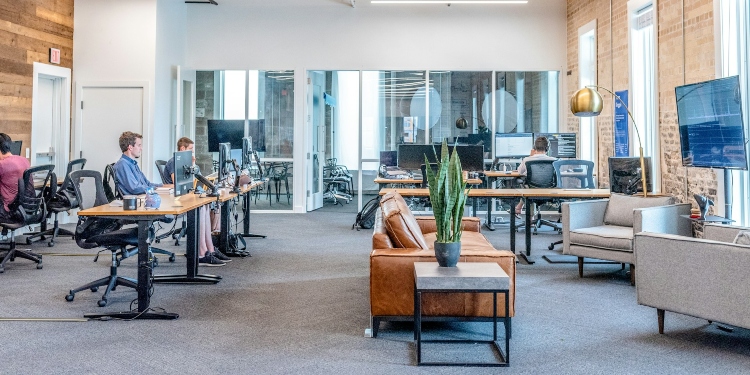Studies show that fixed costs often account for up to 40% of total expenditure in small and medium-sized companies. IT services, storage space and office rents are particularly costly. Experts recommend reducing the share of fixed costs to below 30% in the long term in order to remain economically efficient. Optimisation potential can be found above all in digital areas, flexible storage solutions and well-thought-out room design.
Intelligently reduce IT fixed costs
IT costs are among the highest fixed costs in modern companies. In particular, expenses for web design, the administration of digital platforms and social media are significant items. Social media is essential for small and medium-sized companies to achieve reach and acquire customers. Studies show that a large proportion of marketing budgets worldwide are channelled into digital channels, as these are seen as crucial to long-term success.
Optimise IT spending with automation and external expertise
Another way to reduce IT costs is to work with external service providers. Outsourcing certain tasks, such as social media management or content creation, not only saves money but also provides access to specialised expertise. Studies by international agencies show that outsourcing models can reduce fixed costs by up to 30%.
Costs can also be optimised in the IT infrastructure. Instead of operating their own servers, many companies are turning to flexible, scalable cloud solutions. These eliminate high maintenance costs while providing security and adaptability.
Rethink your storage and office space
Fixed costs for storage and office space are a considerable burden on the budgets of many companies. Particularly high rents in urban centres require flexible solutions. Studies by the OECD show that in cities like London or New York, rents for commercial property can account for up to 20% of total expenditure. Modular concepts can help here.
Cost-efficient alternatives to fixed spaces
The e-commerce industry in particular is growing rapidly, presenting companies with new challenges. According to a study by Statista, global online trade is expected to reach a volume of 8.1 trillion US dollars by 2027. This boom requires logistical adjustments, especially when it comes to the storage of goods. Temporary storage facilities such as a modular aircraft hangar have become indispensable in this context. They enable companies to respond to seasonal demand peaks without having to enter into long-term leases for large areas.
Modular concepts such as a Spantech topic suggestion offer further possibilities for optimising storage requirements. Such hall constructions can be individually adapted, expanded or reduced, depending on seasonal demand.
Coworking spaces: more than just a trend
Flexible solutions are not limited to storage space. Coworking spaces are also revolutionising the way companies use office space. According to the Global Coworking Growth Study 2023, more than 25% of companies already use coworking models. These offices offer a cost-effective alternative to traditional leases, as companies only pay for the space they actually use.
Increase energy efficiency and reduce costs
Energy costs represent a significant portion of the fixed costs for companies. According to the International Energy Agency (IEA), companies can reduce their energy costs by up to 30% through targeted energy efficiency measures. Investing in energy-efficient lighting, heating, ventilation and air conditioning systems, as well as implementing energy management systems, can help to sustainably reduce energy consumption.
International funding programmes
Many countries offer tax incentives and funding programmes to support companies investing in energy efficiency. In the United States, the Business Energy Investment Tax Credit (ITC) allows companies to deduct a percentage of their investment costs in renewable energies and energy-efficient technologies from their tax liability. In the United Kingdom, the Enhanced Capital Allowance (ECA) Scheme offers companies the opportunity to deduct 100% of the investment costs for qualified energy-efficient equipment from their taxes in the first year.
Optimise supply chains and reduce procurement costs
Optimising the supply chain offers significant potential for reducing fixed costs. By consolidating supplier relationships and negotiating better conditions, companies can significantly reduce their procurement costs. A study by McKinsey & Company shows that companies can achieve savings of 5% to 10% through strategic supplier management. In addition, implementing digital procurement tools enables greater transparency and efficiency in the supply chain, which leads to further cost reductions.
Flexible human resourcesPersonnel costs are often one of the largest fixed cost items in a company. By introducing flexible working models, such as part-time employment, temporary work or project-based contracts, companies can adapt their personnel costs to their actual needs. According to a study by the World Economic Forum, 44% of companies worldwide already use flexible working models to optimise costs and respond to market changes. In addition, investing in employee training can increase productivity and save costs in the long term by building internal skills instead of using external services.
David Prior
David Prior is the editor of Today News, responsible for the overall editorial strategy. He is an NCTJ-qualified journalist with over 20 years’ experience, and is also editor of the award-winning hyperlocal news title Altrincham Today. His LinkedIn profile is here.











































































